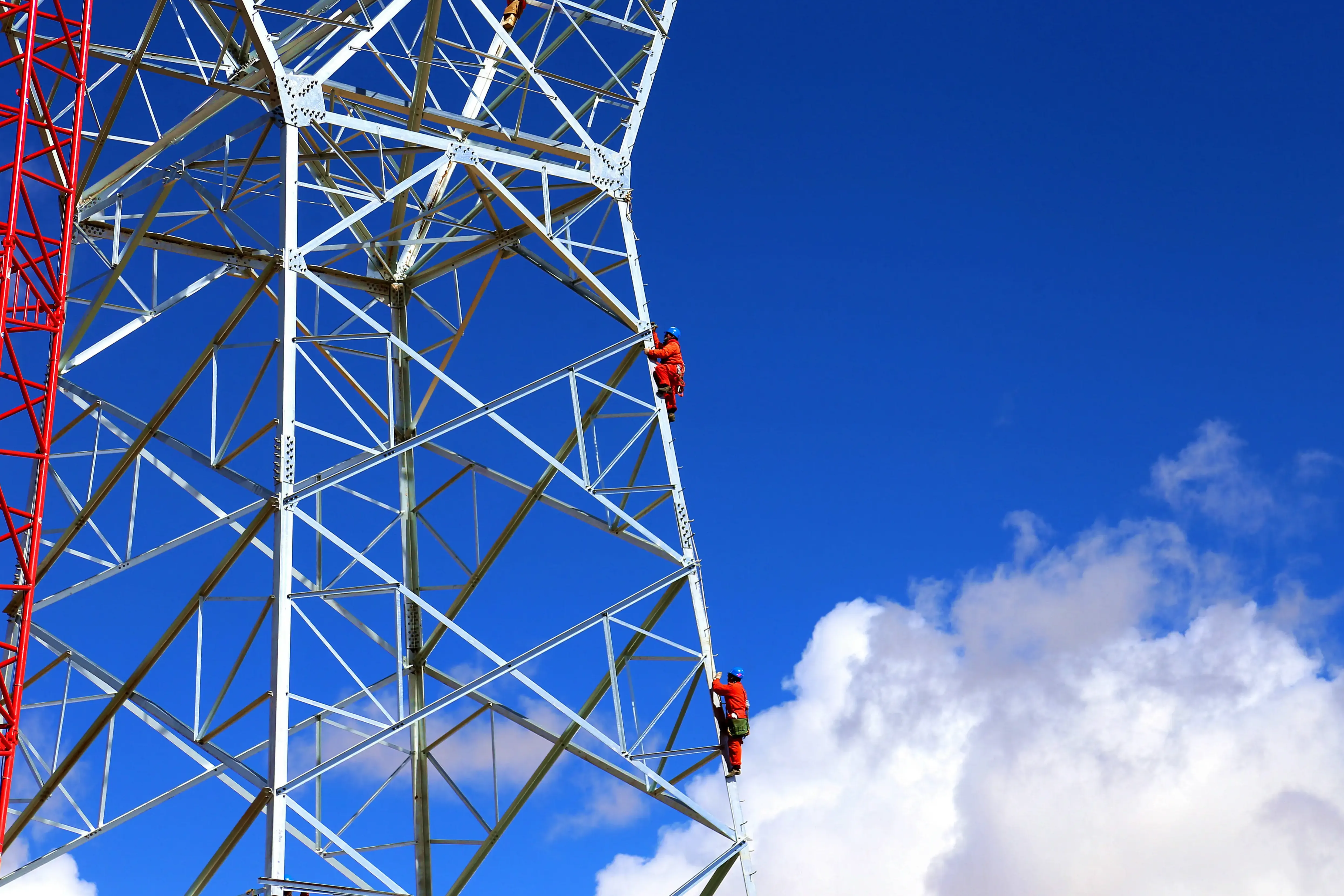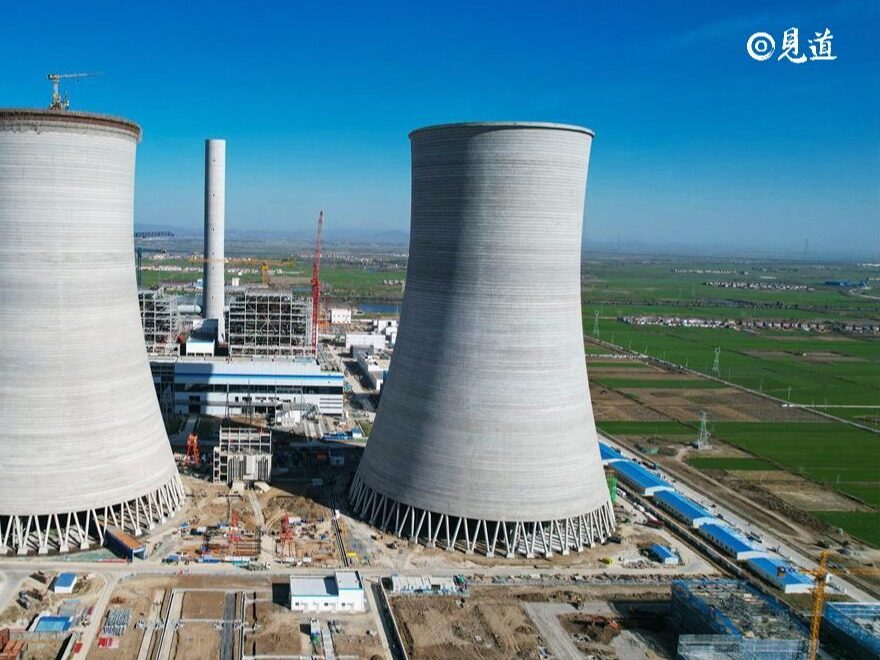- The implementation of power cooperation between Russia and China is beneficial to the economic development of China and Russia

In 2021, affected by the coal industry and environmental protection needs, China will face a tense "power shortage" during the peak electricity consumption periods in summer and winter. After the winter, power consumption has increased significantly. At this critical juncture, Putin waved his hand and announced a large amount of power assistance to China to alleviate China's urgent needs. Some netizens praised: Russia is China's good neighbor and good buddy.

After 70 years of ups and downs, the Sino-Russian relationship has become more mature, stable and tenacious. The heads of state of China and Russia have upgraded the relationship between the two countries to a "China-Russia comprehensive strategic partnership of coordination in the new era", in which energy cooperation is an important part. An important part of Russia's energy cooperation, the electric power cooperation mechanism between the two sides has been improved day by day, and the power trade has remained stable, laying a foundation for further deepening the power and energy cooperation in Northeast Asia.
Buy the highest voltage level, the largest capacity
China and Russia are not only neighbors, but also major energy consumers and producers in the world. Russia is extremely rich in power resources. Its power system ranks the largest in Europe and the fourth in the world, with an annual power supply of 1 trillion kWh. At present, China's total annual power generation has exceeded 10 trillion kilowatt-hours. The abundant electric energy has greatly promoted the development of China's national strength, and China is also vigorously promoting the development of the domestic clean energy industry. At present, China's domestic wind power, photovoltaic hydropower, etc. The annual power generation of clean energy facilities has also exceeded 1 trillion kilowatt-hours, but the detailed data on domestic electricity consumption previously released shows that some frontier areas, such as the Northeast, some areas import large amounts of electricity from abroad every year. According to the latest statistics from State Grid Heilongjiang Electric Power Co., Ltd., since July 1, 1992, the State Grid Heilongjiang Electric Power 110kV Buhei Line (Russia Blagoveshchensk Substation-China Heihe Substation) has been put into operation, and China has accumulated accumulative Purchased 30.462 billion kWh of electricity, reducing domestic coal consumption by about 10.18 million tons.
In the early 1990s, transnational power supply was a challenging endeavor for both Heilongjiang Province and China. On July 1, 1992, the 110 kV cloth black line was closed for power transmission, which opened a precedent for Sino-Russian power cooperation in history.

Practice has proved that the successful operation of the first transnational transmission line has enhanced the confidence of China and Russia in the field of electric power cooperation.
The 10 kV black line, the 220 kV cloth A and B lines, and the 500 kV Sino-Russian DC interconnection project are milestone projects that connect the Sino-Russian power "Silk Road" and transport Russia's rich energy resources to China. Under the framework of the Belt and Road Initiative, the Sino-Russian energy cooperation has been further expanded, deepened and consolidated, and the power grid in the northeast of the country, which is coordinated with UHV power transmission from west to east and from north to south, has been greatly strengthened, and the economic development and complementary advantages of China and Russia have been realized. .
"Over the years, these four transnational interconnection lines have continuously imported Russian power resources into China, which not only improved the energy utilization rate of the Russian Far East, but also supported the economic development of China's northeastern region, and further promoted the national 'northern power transmission to the south' project. implementation.” Jiang Xiaolin, deputy general manager of State Grid Heilongjiang Electric Power Huayuan Integrated Energy Service Co., Ltd., who is in charge of purchasing electricity from Russia, said.
Strengthening in-depth cooperation between China and Russia in electric power
Heilongjiang Province is located in the northeastern border of the motherland. It has a water and land border of more than 1,000 kilometers with the Russian Far Eastern states. It is the forefront of opening up and economic and trade cooperation with Russia. Russia is extremely rich in electric power resources. The scale of its power system ranks first in Europe and fourth in the world, with an annual power supply of 1 trillion kilowatt-hours. Heilongjiang has the natural geographical advantage of accepting the power input from Russia.
Lin Hongyu, spokesman for the Global Energy Internet Development Cooperation Organization and deputy director of the organization's cooperation bureau, said at the press conference of the Global Internet Conference that the cooperation between China and Russia in the field of electricity has a good momentum of development, with huge potential and broad prospects.

The power purchase project from Russia is one of the cooperation projects between the governments of China and Russia in the field of energy. With the strong support of the relevant government departments of China and Russia, and after many researches and demonstrations by electric power technical experts from both sides, the 110 kV Buhei Line (Russia Blagoveshchensk Substation - China Heihe Substation) was officially closed for power transmission. The prelude of Sino-Russian power cooperation was opened, and China's first power "Silk Road" was officially opened.
The completion and operation of the project has important strategic significance for improving the energy utilization rate in the Russian Far East, promoting the local economic development of China and Russia, expanding Sino-Russian energy project cooperation, and strengthening the economic development and complementary advantages of China and Russia.
State Grid Chairman Shu Yinbiao said that in recent years, State Grid Corporation has been actively serving the Belt and Road construction, following the principles of extensive consultation, co-construction and sharing to promote the interconnection of China-Russia power grids. At present, the two countries have four power transmission channels interconnected, and it is planned to purchase 100 billion kWh of electricity from Russia by 2025.

From the perspective of introducing secondary clean energy, reducing domestic primary energy consumption and reducing environmental pollution, the power purchase project from Russia belongs to the category of energy conservation, emission reduction and clean energy projects. Although Heilongjiang Province is currently a major energy exporter, the introduction of clean secondary energy such as electricity to reduce domestic energy consumption and pollution is still an energy project encouraged by the state. Energy saving and transformation of the development mode have become the only way for the country's sustainable development. Electricity imported from Russia is clean secondary energy and green energy, does not consume domestic resources, and does not produce China's pollution and harmful gas emissions. Therefore, under the situation that the country pays more and more attention to environmental protection, the power purchase project from Russia has a lot of room for development.
Since the "13th Five-Year Plan", with the deepening of the Belt and Road construction, the interconnection with Russia's energy infrastructure has been accelerated, and the field of energy cooperation with the Russian Far East has been continuously expanded. State Grid Heilongjiang Electric Power promotes the implementation of the "Catalogue of Key Cooperation Projects in the Northeast of the People's Republic of China and the Far East and Siberia of the Russian Federation" Electricity Cooperation Project Phase II and Phase III Program Economic and Technical Feasibility Demonstration, and agreed on the implementation principles.
In order to ensure the safe and stable operation of cross-border power transmission and transformation equipment, State Grid Heilongjiang Electric Power has comprehensively strengthened safety management and continuously improved the level of equipment operation and maintenance. Conscientiously implement various safety management rules and regulations, sign safety production responsibility certificates at various levels, and fully implement the safety responsibilities of all types of personnel at all levels. The annual overhaul of the 500 kV Heihe converter station is carried out every year. Hundreds of electric power employees cooperate with the Russian power department remotely in the Heihe region, and it takes 20 days to complete the overhaul work.

In terms of lean management, the company innovatively proposed and implemented the "Four Fines" management model of "sincere unity, fine management, lean operation and maintenance, and superb skills", and took the lean inspection and evaluation work of State Grid Corporation as the starting point to comprehensively and deeply investigate equipment hidden dangers and management. weakness. Implemented the "Two Belts and One" and "Master-Apprentice" employee quality improvement projects, regularly organized "team lectures" and "employee skills competition" activities to stimulate innovation and efficiency of teams, developed and implemented the semi-automatic DC power curve of the 500 kV Heihe converter station It has become the second converter station in the country to fully implement the semi-automatic power curve. The 500 kV Heihe back-to-back converter station of the Sino-Russian DC interconnection has won the honorary title of the State Grid Corporation of China DC Substation Lean Management Red Flag Station for five consecutive years.
Especially since 2020, with the increasingly close cooperation between China and Russia in the energy field, the purchase of electricity from Russia not only improves the utilization rate of remaining energy in the Russian Far East, but also provides sufficient and stable energy for Northeast China, especially the Heihe region. Clean electricity has played an increasingly important role in the win-win economic development of the two places.
Help build Northeast Asia Energy Internet
"The Sino-Russian power and energy cooperation started early, has a solid foundation and achieved remarkable results, and has become a successful example of transnational power and energy cooperation and energy interconnection. Both China and Russia are important in the Northeast Asia Interconnection Project initiated and promoted by the Global Energy Interconnection Development Cooperation Organization. Participants and firm implementation force. Focusing on the Northeast Asia Networking and other bilateral networking projects, the cooperation between the two sides will become closer and achieve greater results.” Lin Hongyu, spokesperson of the Global Energy Interconnection Development Cooperation Organization and deputy director of the Cooperation Bureau, told the media earlier. express.

Liu Zhenya, chairman of the Global Energy Interconnection Development Cooperation Organization, said when attending the 5th Eastern Economic Forum in Vladivostok, Russia, that the Russian Far East, Mongolia and Northeast China and North China have abundant clean energy resources, and China, Japan and South Korea have huge energy market. Giving full play to the complementary advantages of resources and markets will promote the large-scale development and large-scale allocation of clean energy in Russia, Mongolia and other countries, provide clean power supply for China, Japan, South Korea, North Korea and other countries, and achieve win-win cooperation among countries.
According to the research of the Global Energy Internet Development Cooperation Organization, the general idea of constructing the Northeast Asia Energy Internet is to accelerate the development of large-scale clean energy bases such as hydropower, wind power in Russia, solar power in Mongolia, wind power in Northeast China, etc. The “Three Rings and One Horizontal” cross-border networking channel in the Hai, Amur River/Heilongjiang River Basin has formed a new energy development pattern of “West-East Power Transmission, North-South Power Supply, and Multi-energy Complementary”. It is estimated that by 2050, the investment in the construction of energy Internet in Northeast Asia will reach 2.7 trillion US dollars, more than 24 million jobs will be created, and the annual cross-border electricity trade will reach 550 billion kWh. Editor / Xu Shengpeng
Comment
 Praise
Praise
 Collect
Collect
 Comment
Comment
 Search
Search














Write something~